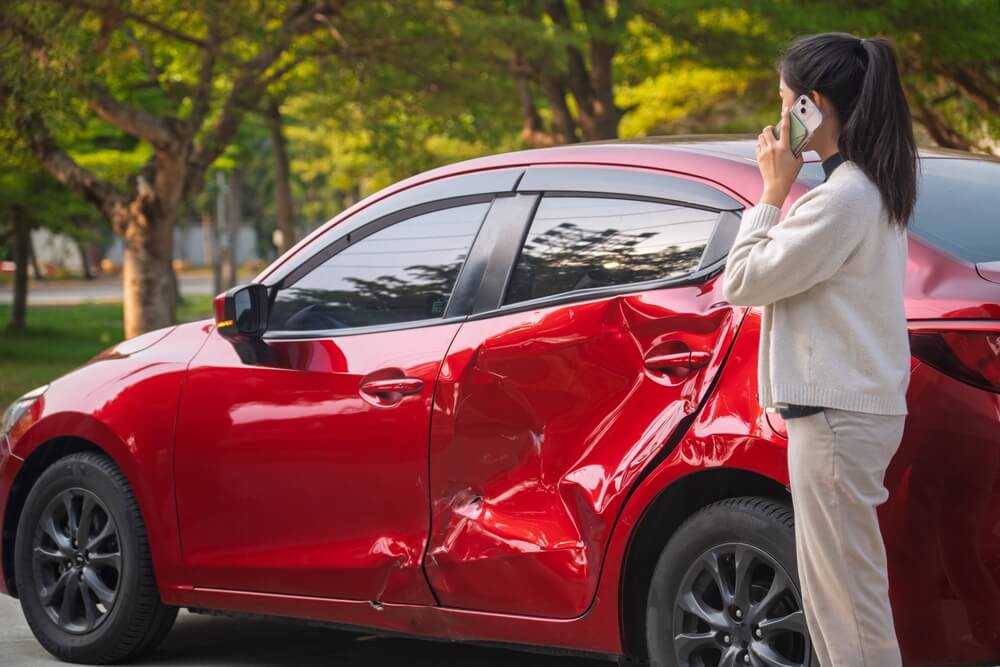
If you are not redirected within 30 seconds, please click here to continue.
Samedi: 10h – 16h HAE

If you are not redirected within 30 seconds, please click here to continue.
If you are not redirected within 30 seconds, please click here to continue.
What You Need to Know About No-Fault Insurance in Ontario

- Insurance companies in Ontario use the province’s fault determination rules to determine who is responsible for a collision.
- Before no-fault insurance was introduced in Ontario in 1990, you would have to sue the other driver to recoup damages you incurred from an accident.
- An at-fault collision will remain on your driving record for up to six years, and it will affect your premium.
What is no-fault insurance?
No-fault insurance in Ontario allows for drivers involved in an accident to each file claims to their respective car insurance providers to get the coverage they need to pay for damages to their vehicles and injuries quickly. Insurance companies are required by law to assign a percentage of the blame to each motorist involved in an accident. Sometimes, only one driver is at-fault for an accident and the other is deemed to be not-at-fault. Other times, both drivers can be found to be at-fault to varying degrees.
No-fault insurance systems operate in several provinces other than Ontario, including Quebec, Nova Scotia, New Brunswick and Prince Edward Island. Alberta, meanwhile, is mulling over whether to adopt a full no-fault system or not.
Determining fault in the no-fault system
After an accident, insurance companies in Ontario use the province’s fault determination rules to determine who is responsible for a collision. These detailed guidelines outline who should receive blame in a wide variety of scenarios. Other provinces have their own fault determination rules that insurers follow.
If your insurance company determines that you are responsible for the accident, you can appeal the decision by filing a complaint with your provider to ask for a review. If your insurance company declines, you can contact the insurer’s ombudsperson to request an investigation.
If the ombudsperson investigating your claim sides with the insurance company’s original decision, you have one other option: contacting Canada’s General Insurance OmbudService (GIO) to help you reach an agreement on your claim with your insurer. Be advised, though, that not all insurers are GIO members, and an insurer can refuse to accept a resolution proposed by GIO.
Is no-fault insurance good for drivers?
Before no-fault insurance was introduced in Ontario in 1990, you would have to sue the other driver to recoup damages you incurred from an accident. Insurance companies would go to court to argue about who was at fault in an accident. It was a drawn-out process that left drivers with damaged vehicles in limbo, waiting for the case to be settled. It was costly, inefficient, and for drivers, maddening to have to wait for a decision to be made in court.
No-fault insurance changed all of that by simplifying and speeding up the claims process. Now, insurers pay their customers’ claims immediately including the damages to your vehicle, and any health care and rehabilitation costs.
No-fault insurance also helps keep overall insurance premiums down by discouraging costly legal battles. As a result, insurance companies save money, and pass those savings to customers.
Despite the system's advantages, some oppose no-fault insurance, claiming it protects risky drivers since the injured party's insurance company must pay for the repairs even if their driver was not responsible for the accident.
How does no-fault insurance affect your premium?
, and you have collision coverage, you'll need to pay the deductible to repair the damage to your car before your insurance provider pays. More importantly, an at-fault collision will remain on your driving record for up to six years, and it will affect your premium.
That means your existing insurance provider may raise your premium at renewal unless you have an accident-forgiveness endorsement on your policy. If you do, your premium won’t go up, but if you have another collision, there will be no accident forgiveness for a second incident.
Since a fault determination goes on your driving record, other insurers will be aware of it, and they too may quote you a higher premium if you change companies. However, some insurers may be more forgiving than others, so it’s worthwhile to shop around for policies and premiums to find the lowest rate.
Don't waste time calling around for auto insurance
Use RATESDOTCA to shop around, and compare multiple quotes at the same time.
Get money-saving tips in your inbox.
Stay on top of personal finance tips from our money experts!









